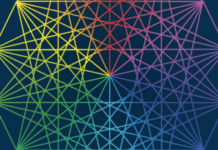The current boiling cultural vortex demands of us who wish to live an examined life, the investigation and use of any and all thought and living models that are helpful. No one structure or system has all the answers. In fact, given the cultural chaos with which we have to deal, the foundations of ALL available models seem to be almost irrelevant. They simply do not speak clearly, coherently and directly to the conditions we find ourselves in.
Some models may work for some people to some extent, but there is no coherence that serves a common awareness, interest, desire or need. Is such commonality important? The assumption here is that it is, but it is also acknowledged that a whole different discussion is needed to justify that assumption.
It is doubtful that the need for commonality in the area of spiritual awareness can be satisfied by an eclectic synthesis of different models from the past. A foundation must be built that speaks directly to current conditions, and that starts not on an epistemological level, but a sensory one, because modern sensory conditions are so unique. An important part of Marshall McLuhan’s work was the examination of sensory bias. Each new form of communication alters the sensory balance of the society into which it is introduced. When the balance is upset, a new balance is sought. The radically new kinds of focus on the eyes and ears brought by electronic media such as television and radio, created a vacuum for the sense of touch which was answered by the intense preoccupation with sexuality, drugs and mysticism (external and internal touch or feeling).
Unless we are determined to pull the plug, we are committed to living with these sensory tensions in all kinds of ways. The first step, then, in developing a paradigm for the spiritual life, is establishing sensory integrity. What form that integrity should take is open to discovery, but obviously the arts have a crucial role to play. An important outcome, what ever it might be, would have something of the character of the kinds of thing seen in plain chant. The resonances of plain chant are in very striking harmony with the frequencies of the human nervous system. Similarly a Tibetan meditation bell has a slight variation in tone that is supposedly hard to perceive outside of a state of meditation. An important dimension of research into contemplation, then, would be artistic exploration of an effective sensory life and environment. Viritual reality experiments may be VERY important for this purpose.
Let us learn a lesson from Buddhism. Meditation is not allowed until sometime after one learns how to close doors and pour tea (reported by Merton to his fellow monks after a meeting with Thic Nyat Han).
Peter
************************************************************* * Peter Montgomery Montgomery@camosun.bc.ca * * Professor * * Dept of English ph (604) 370-3342 (o) * * Camosun College (604) 370-3346 (fax) * * 3100 Foul Bay Road * * Victoria, BC Off. Paul Bldg 326 * * CANADA V8P 5J2 * *************************************************************
Copyright by Peter Montgomery, August, 1993. Further re-production in any form must be accompanied with this statement and the identification information listed at the end of the passage.








